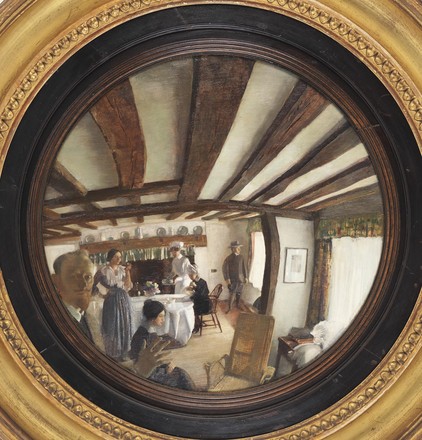At Omelo we’re keen on convex mirrors and we’re keen on art. So we came up with the genius idea of a blog series on Convex Mirrors in Art. You may have read the first part in this series already.
There is huge amount of art featuring convex mirrors. Sometimes used for their symbolic meaning (vanity), but in many cases simply an excellent device for artists to showcase their skill – have you ever tried painting a convex reflection?!
Australian artist George Lambert painted The Convex Mirror whilst staying in England in 1916. Lambert’s son Constant became seriously ill while he was a pupil in Horsham. Constant’s condition was so grave that Lambert and his wife Amy moved to the village of Cranleigh to be near him. To pass the time, Lambert painted The Convex Mirror.
This painting presents a group of people in a convex reflected image. They stand in the low-beamed living-room of Belwethers, a cottage in the village. Lambert accurately captures the way the convex mirror widens the scene. He depicts mistresses and maids, the daily ritual of tea and domestic life. And, looking out of the image in the foreground is the artist himself.
It really is a masterful depiction of a room viewed through a convex mirror. There are many more paintings in galleries around the world depicting convex mirrors and convex reflections. Next time, an Italian Renaissance masterpiece..!
You may also be interested in the first part to this blog, Convex Mirrors in Art.

